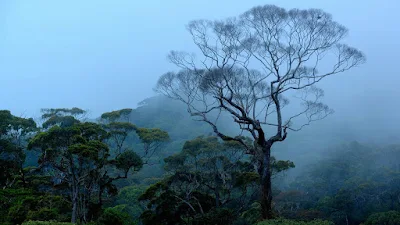Sinharaja rain forest world heritage site Sri Lanka
Sinharaja Forest Reserve is a UNESCO World Heritage Site located in the southwestern region of Sri Lanka. It is a tropical rainforest that covers an area of approximately 11,187 hectares and is home to a diverse range of flora and fauna, including many endemic species.
The Sinharaja Forest Reserve is considered to be one of the last remaining relatively undisturbed areas of rainforest in Sri Lanka, and it is an important habitat for many threatened and endangered species, such as the Sri Lankan Leopard and the Purple-faced Langur.
The forest is also a popular destination for tourists who are interested in ecotourism, bird watching, and hiking. There are several well-marked trails that visitors can follow to explore the forest, and there are also several campsites where visitors can spend the night.
Visitors are advised to be respectful of the fragile ecosystem and to follow the rules and regulations of the forest reserve. This includes not littering, not disturbing the wildlife, and not damaging the flora.
There are several trails available for visitors to explore the Sinharaja Forest Reserve in Sri Lanka. Here are some of the popular ones:
This is a popular trail that starts from the Kudawa Conservation Center and takes visitors through the heart of the forest. The trail is around 6 km long and takes around 4 hours to complete. Along the way, visitors can spot many different bird species, including the Sri Lankan blue magpie, the Sri Lankan junglefowl, and the Sri Lankan green pigeon.
This is a longer and more challenging trail that takes visitors up to the highest peak in the forest, Moulawella. The trail is around 14 km long and takes around 8 hours to complete. Along the way, visitors can see many different types of trees, including the giant Dipterocarpus trees, as well as a variety of birds and other wildlife.
This is a shorter trail that takes visitors through a secondary forest that is less dense than the main forest. The trail is around 3 km long and takes around 2 hours to complete. Along the way, visitors can see many different bird species, including the Sri Lankan hanging parrot, the Sri Lankan grey hornbill, and the Sri Lankan wood pigeon.
This is a steep and challenging trail that takes visitors up to the Sinhagala peak. The trail is around 7 km long and takes around 5 hours to complete. Along the way, visitors can see many different types of trees, including the endemic Hourglass tree, as well as a variety of birds and other wildlife.
It is important to note that visitors are required to obtain a permit and be accompanied by a licensed guide when exploring the forest. This is to ensure the protection of the fragile ecosystem and to minimize the impact of human activity on the forest.

